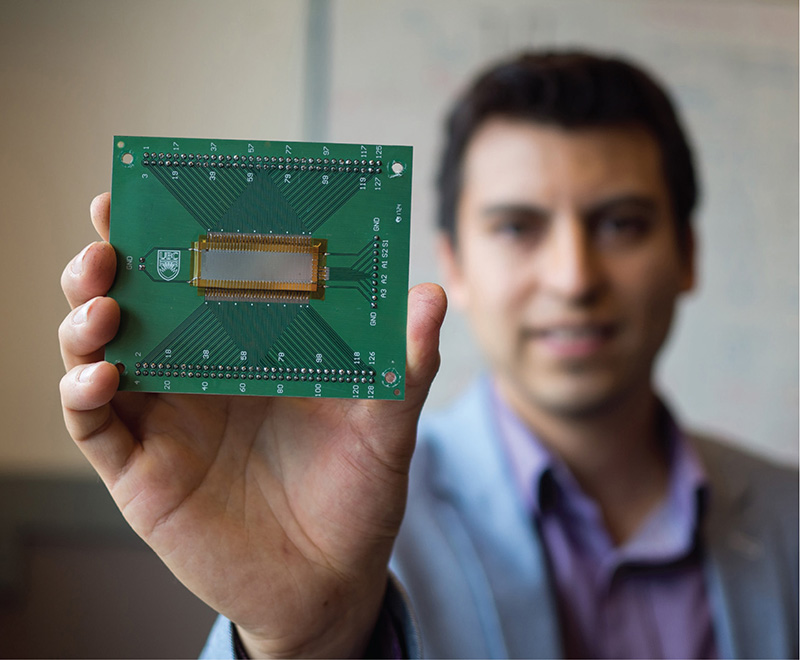The ultrasound scanner of the future?
Engineers at the University of British Columbia have developed an ultrasound transducer that could dramatically lower the cost of ultrasound scanners to as little as $100. The patent-pending innovation is portable, wearable, and can be powered by a smartphone (it needs just 10 volts to operate). The transducer also has the potential to be built into a flexible material that can be wrapped around the body for easier scanning and more detailed views.
Conventional ultrasound scanners use piezoelectric crystals to create images of the inside of the body and send them to a computer to create sonograms. UBC researchers replaced the piezoelectric crystals with tiny vibrating drums made of polymer resin, called polyCMUTs (polymer capacitive micro-machined ultrasound transducers), which are cheaper to manufacture. Sonograms produced by the UBC device were as sharp as or even more detailed than traditional sonograms.
Researchers will next be developing prototypes and eventually testing the device in clinical applications. The study’s lead author is Carlos Gerardo, a PhD candidate in electrical and computer engineering at UBC. The research, “Fabrication and testing of polymer-based capacitive micromachined ultrasound transducers for medical imaging,” was published in Microsystems & Nanoengineering.
 |
| Study lead author Carlos Gerardo holding the new ultrasound transducer that could revolutionize ultrasounds. |

